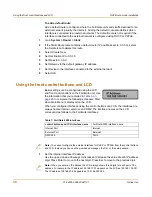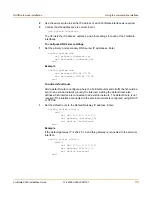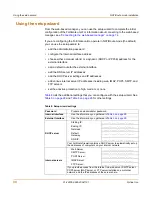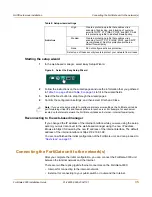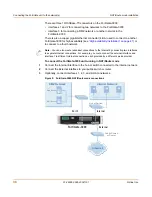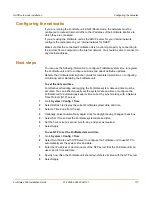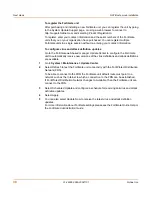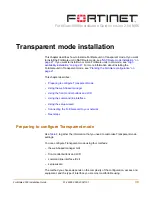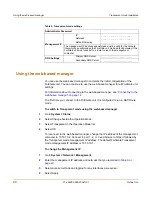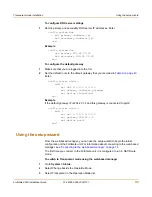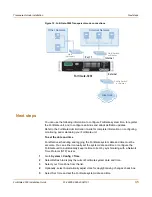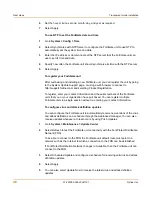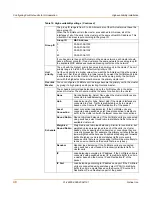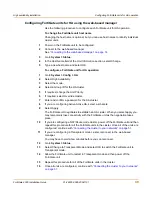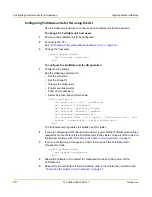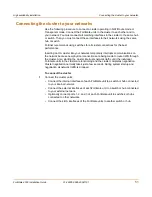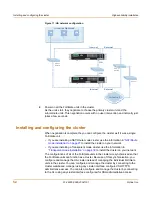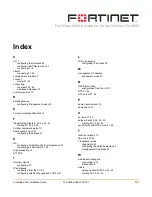
44
01-28005-0026-20041101
Fortinet Inc.
Connecting the FortiGate unit to your network
Transparent mode installation
4
Select OK.
To reconnect to the web-based manager, change the IP address of the management
computer to 10.10.10.2. Connect to port 1, 2, or 3 and browse to https:// followed by
the Transparent mode management IP address. The default FortiGate Transparent
mode management IP address is 10.10.10.1.
To start the setup wizard
1
Select Easy Setup Wizard (the middle button in the upper-right corner of the
web-based manager).
2
Use the information that you gathered in
Table 9 on page 40
to fill in the wizard fields.
Select the Next button to step through the wizard pages.
3
Confirm your configuration settings, and then select Finish and Close.
Reconnecting to the web-based manager
If you changed the IP address of the management interface while you were using the
setup wizard, you must reconnect to the web-based manager using the new IP
address. Browse to https:// followed by the new IP address of the management
interface. Otherwise, you can reconnect to the web-based manager by browsing to
https://10.10.10.1. If you connect to the management interface through a router, make
sure that you have added a default gateway for that router to the management IP
default gateway field.
Connecting the FortiGate unit to your network
After you complete the initial configuration of the FortiGate-3000 unit, you can connect
the FortiGate-3000 between your internal network and the Internet and to other
networks.
There are two fiber-optic gigabit ethernet connectors on the FortiGate-3000:
• Internal for connecting to your internal network,
• External for connecting to your public switch or router and the Internet.
The FortiGate-3000 has three 10/100Base-TX connectors and a copper gigabit
ethernet connector (4/HA) that can be connected to up to four different networks. You
can connect them in any configuration.
To connect the FortiGate-3000 unit running in Transparent mode:
1
Connect the Internal interface to the hub or switch connected to your internal network.
2
Connect the External interface to the public switch or router provided by your Internet
Service Provider.
3
Optionally connect interfaces 1 to 4/HA to hubs or switches connected to your other
networks.

